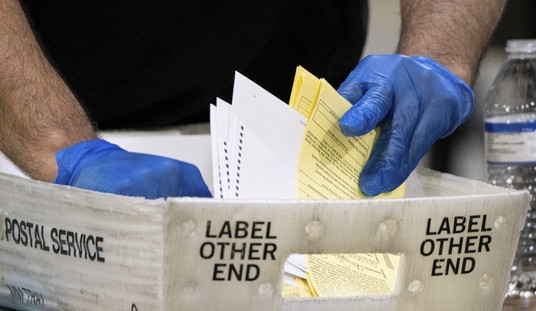UPDATE: As mentioned in the original article, the figures I used and the math may not be correct and I asked commenters to offer “corrections,” as some have. I put corrections in quotation marks because the correctors can’t quite agree how inflated my figures are.
One says — based on Yahoo Answers, no doubt a highly credible scientific source — that my figure was 15 times too high. Another says that I was 27 times too high.
When the “correct” figures have a 200% range, I’m not so sure that the corrections are reliable. In any case, a human on a bicycle puts out a non-trivial amount of CO2 that may in fact be on the same order of magnitude as an internal combustion engine.
————————————————-
Transportation Secretary Ray LaHood wants us to ride bikes to work instead of our cars.
One of the reasons he gives is environmental — what could be greener than riding a bike? Walking perhaps, and actually LaHood wants us to wear out the shoe leather too, but for most people walking to work isn’t an option. Riding a bicycle, which can easily hit 20 mph or more, is a viable alternative to driving for many folks.
Not to poke fun, just being observant — LaHood’s physique is not that of an endurance enthusiast. I don’t think Ray follows his own advice.
Unlike Secretary LaHood, I know something about bicycles. I’ve been a serious recreational cyclist for about 16 years and typically ride 2,000 to 4,000 miles a year, using my bike for both transportation and pleasure. When I worked for DuPont, I commuted by bicycle seven months out of the year, about 20 miles a day including the training loop I did on the way home. I’ve been a staunch advocate for alternative transportation, and I literally have the scars (and a stainless steel plate) to prove it.
But while I’d love to see more bike lanes (and fewer rotaries) and some serious enforcement to make drivers aware of sharing the road, from an environmental standpoint bikes are no panacea.
This may be a surprise to the folks at the EPA, but people produce carbon dioxide. We breathe in air, make use of the oxygen, and exhale carbon dioxide. Breathe in, breathe out. CO2 output at rest is not significant, but at aerobic distances and heart rates, that CO2 expelled becomes a non-trivial amount when compared to an internal combustion engine.
One of LaHood’s “recommended actions” to encourage the use of bicycles for transportation is to collect data on biking trips — though he does not suggest calculating the carbon emissions of your biking vs. a car trip.
This is all quick and dirty, and if my figures are wrong, please provide me with more accurate data or correct my math.
It appears that an average adult male will exhale 0.00899 kg/min of CO2 at rest. I had trouble finding data on the amount of CO2 exhaled when exercising aerobically, but I think we can use VO2, the volume of oxygen you can get into your blood, as a proxy. For adult men average VO2 at rest is 3 ml/kg/min. VO2 max varies depending on age and fitness, but adult male non-athletes have a VO2 max of between 36 and 52, while runners, cyclists, and other aerobic athletes can get their VO2 max into the 60-80 range. I think it’s safe to say that CO2 is exhaled proportionally to the amount of oxygen processed.
Using an average VO2 max for non-athletes of 44, that’s 14.6 times resting VO2. You’re aerobically exercising at about 2/3 of your maximum heart rate, which would be 9.8 times resting. So if VO2 at aerobic levels is about 10 times greater than VO2 at rest, then the amount of CO2 you expel on a bicycle is also 10 times greater than you exhale at rest.
Driving a car is essentially a rest state. If you put out 0.009 kg/min of CO2 at rest, then on a bicycle working aerobically you are putting out an additional 0.081 kg/min of CO2. At 15 miles per hour, 15,000 miles is 60,000 minutes. At a rate of 0.081kg/min, that works out to 4,860 kg of CO2. That’s 10,692 pounds.
You would exhale 5.34 tons of CO2 on a bike that you wouldn’t generate while driving a car.
Looking at the major manufacturers selling cars in North America, most had a fleet average for 2009 of between 8 and 10 tons of CO2 per year per vehicle based on a 15,000 mile average. So it appears, at least in terms of CO2 emissions, that riding a bike might have less of an environmental impact than driving the average car in America: 5.34 tons vs. 8 to 10 tons.
However, if two people carpool to work, they will emit less CO2 than if they were both riding bicycles.
That was against a fleet average, though. How do bicycles compare to the vehicles that emit the least CO2?
Of the top 10, the best is the Toyota Prius at 3.81 tons of CO2 per 15,000 miles. Number two is the Honda Insight, at 4.5 tons per year. The rest of the top ten put out between 5 and 6 tons/yr CO2.
Riding a bike comes in fifth place.
So there are already four cars on the market that have lower CO2 emissions when carrying a single passenger, the driver, than a man on a bicycle. For the vast majority of new cars sold today, carpooling with as few as two people eliminates any environmental advantage, at least in terms of CO2, that bicycles have.
The only cars that, fully loaded with passengers, have bigger carbon footprints than a bicycle are exotic supercars like Lamborghinis — and then only because they are two-seaters. A four seat Lambo might very well be greener than a bicycle built for two.
The EPA wants to regulate carbon dioxide as a pollutant. Every government agency with more than 3,000 employees exceeds the de minimus triggering limit of the EPA’s proposed regulations for CO2 simply with the amount of air they breathe in and out while at work.
Maybe the first place to start is with all the hot air spewing out of Washington.









Join the conversation as a VIP Member